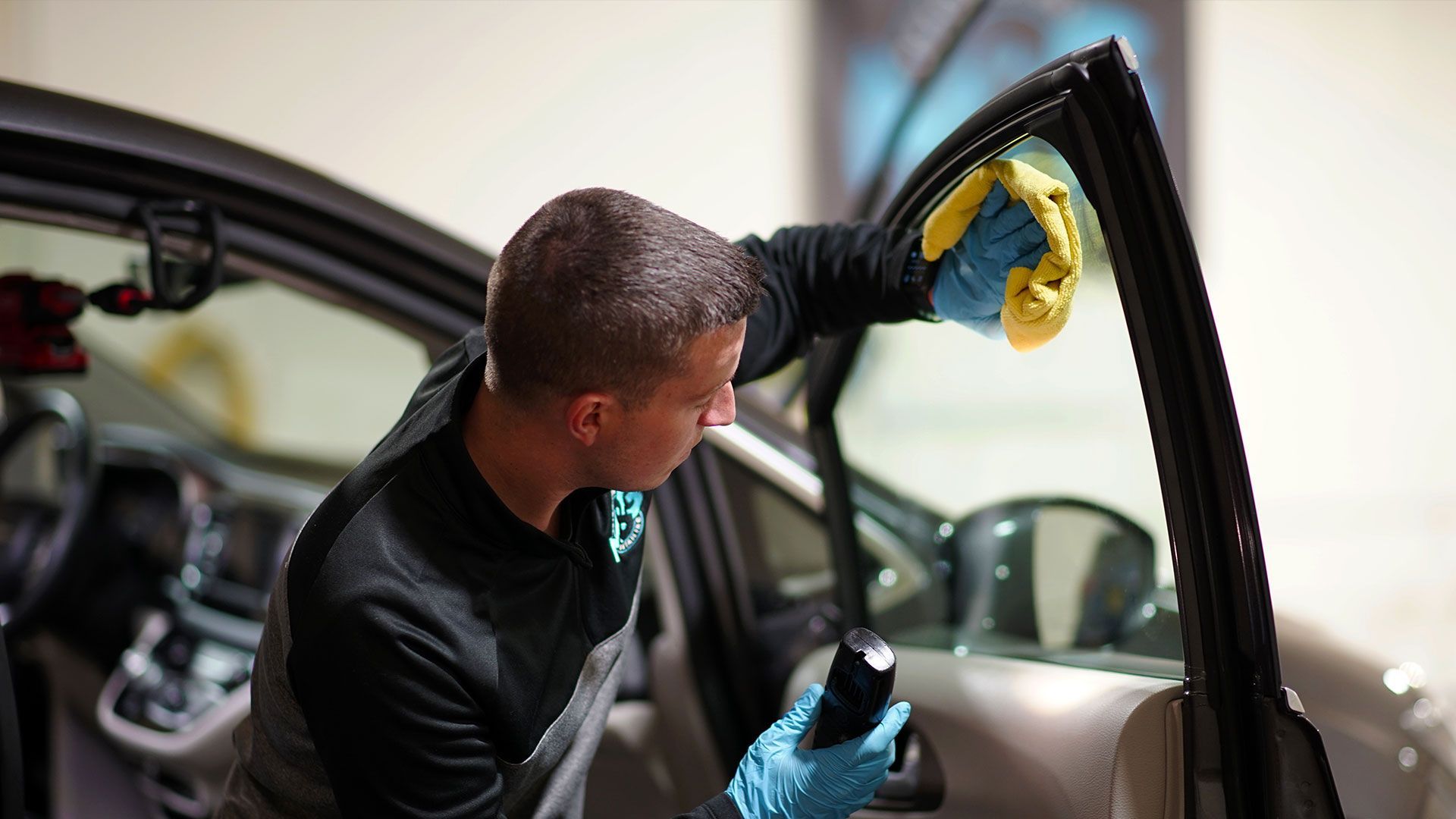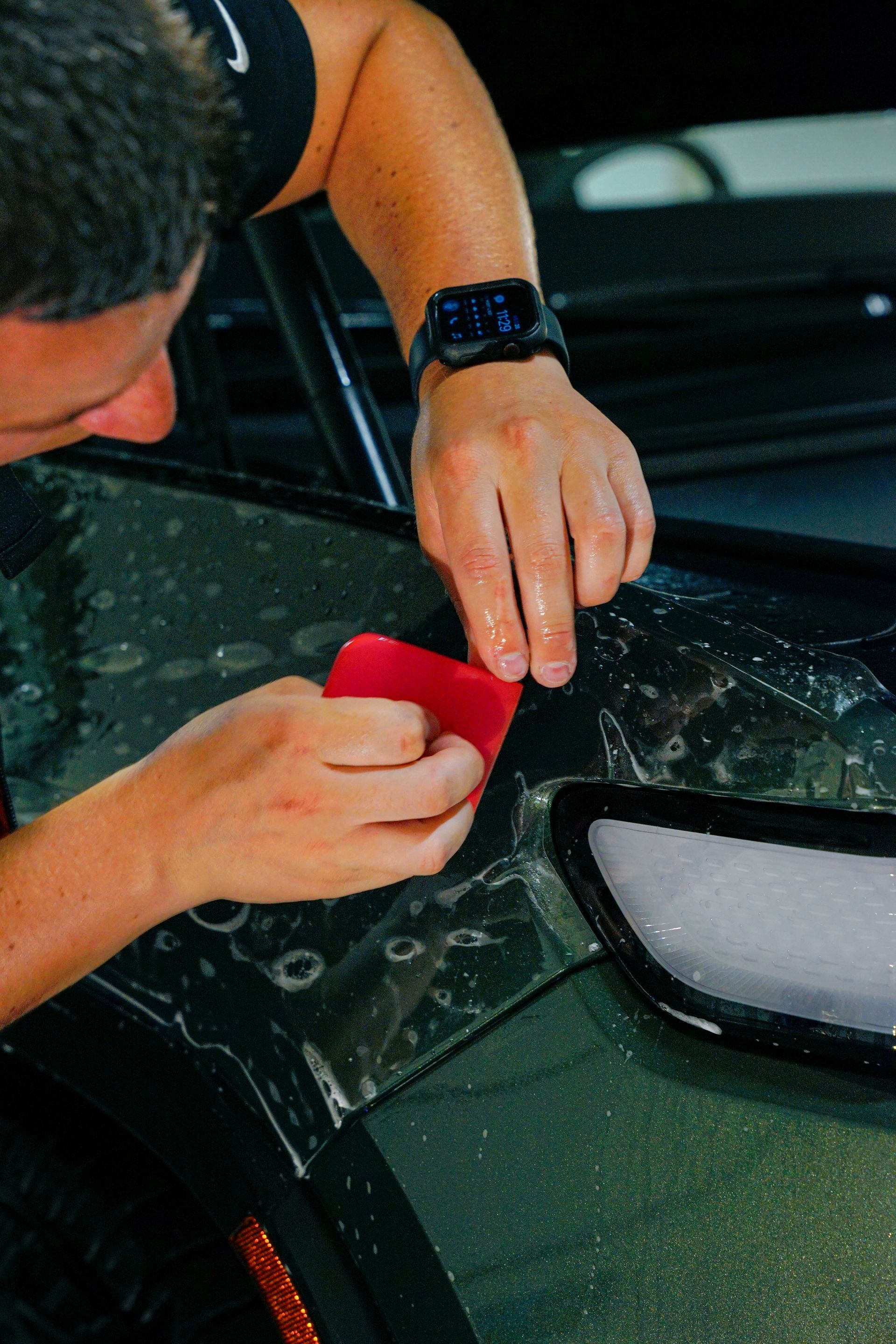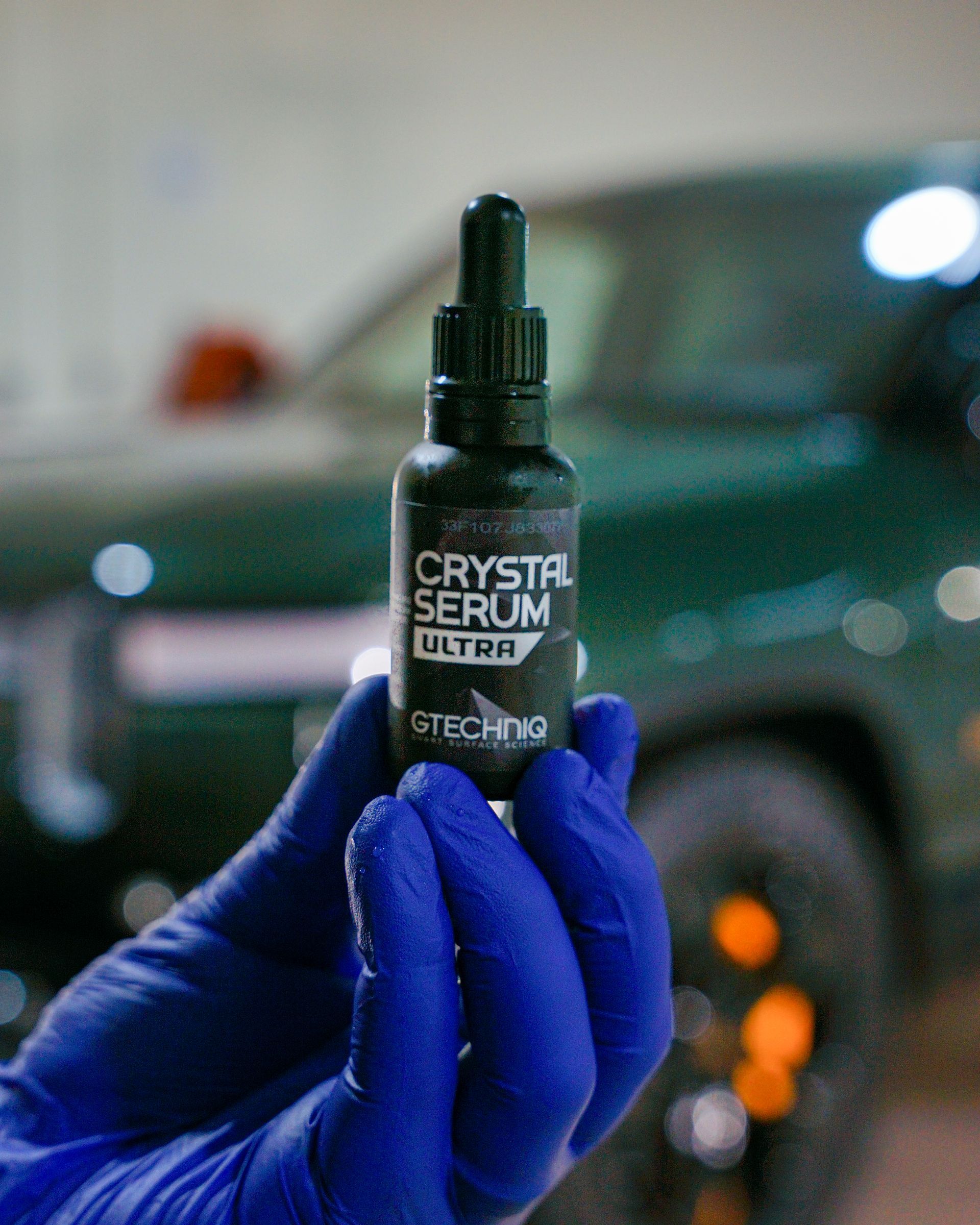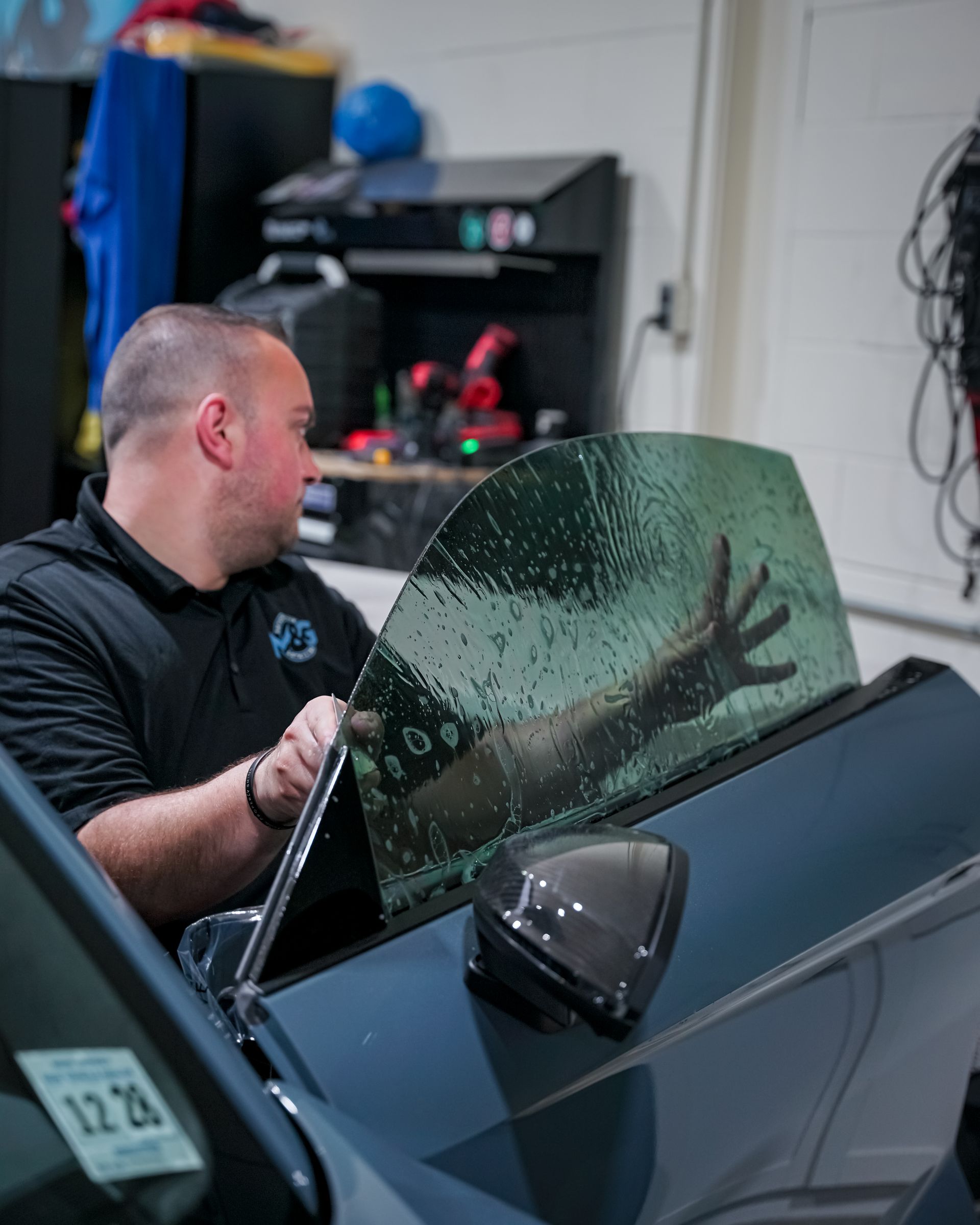By SEO Team
•
February 1, 2025
When it comes to keeping your car comfortable and your interior looking great, window tinting is a game-changer. You might think of tinting as just a cool look, but it's so much more than that. Imagine stepping into your vehicle on a hot summer day and not being hit by a wave of heat—sounds amazing, right? With the right tint, you can lower the temperature inside your car while also blocking those pesky UV rays that can cause fading and damage over time. That’s why taking a closer look at vehicle tinting isn’t just a nice-to-have; it’s an essential step toward extending the life of your car and enhancing your driving experience. Let's dive into how effective heat protection can make your ride much more enjoyable! Tinting plays a significant role in preventing interior overheating in vehicles by reflecting a substantial percentage of solar heat away from the glass surfaces, thereby reducing the overall temperature inside the car. By blocking harmful UV rays and allowing for better climate control, window tinting not only enhances passenger comfort but also protects interior materials from fading. Heat Reduction Through Window Tinting When you think about the summer sun blazing down on your vehicle, you may envision the sweltering heat that greets you when you open the door. However, this can be significantly mitigated by opting for high-quality window tinting. As car owners, we all seek comfort, which includes creating a more bearable interior temperature to protect our skin and our vehicles’ components from damage caused by harsh sunlight. Did you know that some tints claim to block up to 99% of harmful UV rays? This is especially essential for maintaining your car’s interior and preserving its aesthetic appeal over time. Sun damage can lead materials like leather and plastic to crack and fade, ultimately impacting both the look and resale value of your vehicle. Keeping upholstery intact is yet another reason to consider heat-reducing window films as an essential investment. Moreover, ceramic tinting films have gained immense popularity due to their effectiveness in blocking heat while still allowing adequate visible light into the cabin. Unlike traditional films, they resist fading and are less likely to interfere with electronic signals such as GPS and satellite radio. That's right; no more pesky interruptions just because you decided to keep your car cool! As we explore further, it's important to recognize how these protective measures can also contribute significantly to enhancing safety and efficiency within the vehicle environment. Advantages for Vehicle Interiors Window tinting goes beyond just a sleek appearance; it offers vital protection for your vehicle’s interior. Over time, the sun's relentless rays can wreak havoc on your car’s upholstery and dashboard materials. From fading colors to cracked vinyl, the damage incurred by consistent sun exposure can be costly, leading to expensive repairs or replacements. However, tinted windows act as a shield, filtering out up to 99% of harmful UV rays, thus helping to preserve the integrity of your car’s interior. Extending Longevity of Interiors Regularly investing in window tinting is like giving your vehicle a long-term insurance policy. By blocking detrimental UV rays, you effectively extend the life of your interiors. Fabrics and materials used in vehicles today are designed for comfort and style, but they aren't invincible against the sun's unyielding power. Think about it: a simple yet effective solution can save you from needing costly reupholstering much sooner than expected. Considering the return on investment in window tinting is crucial when contemplating enhancements for your vehicle. To fully appreciate these benefits, one must understand the various tinting materials available, as they each offer unique properties suited for different needs and preferences. Selecting the right type can maximize both aesthetics and functionality, ensuring you enjoy all the rewards of your investment in protecting what is often one of our biggest assets: our vehicle. This pivotal choice sets the stage for understanding how different materials influence not just looks but overall effectiveness in heat protection. Different Tinting Materials Explained When it comes to vehicle tinting, not all films are created equal. Let's explore the four primary types of materials available for automotive window tinting and their unique characteristics. Dyed Films: Dyed films are often regarded as the most budget-friendly option on the market. This type of tint absorbs solar heat, reducing glare while providing a sleek, dark appearance to your vehicle's windows. However, it's essential to note that dyed films do not offer the same level of heat rejection as other materials—think of them as stylish sunglasses without UV protection. Over time, exposure to sunlight can cause these films to fade, making regular maintenance crucial if you choose this economical option. Metalized Films: Moving up from dyed films, we have metalized films, which incorporate tiny metallic particles to reflect heat and ultraviolet rays effectively. This reflective quality makes them highly efficient at keeping your vehicle's interior cool. Imagine sitting in a car during a sweltering summer day; metalized tints can make a noticeable difference in maintaining a comfortable temperature. However, one downside is that these films can interfere with radio and GPS signals, much like how tall buildings can affect cell reception. Therefore, if you're heavily reliant on technology in your vehicle, this might be something to consider. Hybrid Films: A middle ground between dyed and metalized options is hybrid films. These solutions combine the best attributes of both previous types: they provide effective heat rejection while minimizing signal interference associated with metalized films. Hybrid tints are a great balance of cost and performance without sacrificing functionality too much. They represent an excellent choice for those who want a good mixture of affordability and effectiveness. Ceramic Films: Finally, we arrive at ceramic films, which stand as the premium option available today. They excel by blocking up to an impressive 50% of solar heat and an astonishing 99% of harmful UV rays while maintaining high visibility inside your vehicle. Unlike other materials, ceramic films are designed to withstand fading over time, making them incredibly durable despite their higher price tag. For those who view long-term investments in comfort, safety, and aesthetics as worth the extra cost, ceramic films represent an excellent choice. Once you grasp the various types of materials available for tinting, it's equally important to consider the regulations and implications surrounding this installation process.







